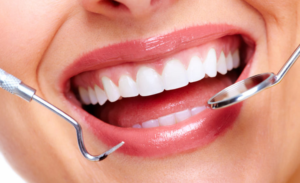Lip Filler San Diego can effectively treat those looking to enhance their lips. The procedure is relatively quick and easy to perform.
Newer dermal fillers designed specifically for the lips and new injection techniques have increased the longevity of results. However, the body will eventually reabsorb these common hyaluronic acid fillers over time.

- Hydration
Hyaluronic acid (the primary ingredient in lip fillers) naturally occurs in the body and is responsible for attracting and holding water in the skin. This is why hyaluronic acid has become a popular ingredient in skincare products and lip balms; it helps to hydrate and plump the lips by adding moisture. It’s important to stay hydrated before your procedure to ensure the lips are nice and full, as well as during and after. Dehydration can impact the results and even increase bruising from your dermal filler.
Choosing a qualified medical professional when booking your appointment for a lip filler is a good idea. Your injector should have experience with Restylane and Juvederm lip fillers and be able to show you examples of their work. They should be able to answer any questions about the procedure and explain how to care for your lips after treatment.
When choosing the right lip filler, it is important to consider your anatomy, tissue consistency, and lip structure. Remembering your desired result and whether you are aiming for a subtle or dramatic look is crucial.
Our experienced injectors will help you achieve your perfect pout by considering all of these factors. They can suggest the best product for your needs, creating natural-looking and long-lasting results.
For example, Volbella is the ideal choice to smooth fine lip lines and redefine the lip borders, and it also works very well on vertical expression lines (smoker’s lines). We often combine Volbella with Vollure to create a fuller base and then add a “topper” layer of Volbella for a beautiful, soft, and natural finish.
- Volume
Lip filler is a great way to add volume and make the lips look fuller. Thin lips can give a harsh or upset appearance, but adding volume can help the face become more balanced and visually appealing.
The lips are a major focal point when it comes to facial expressions, and the shape of the mouth is one of the most important aspects in determining how people perceive you. Fuller lips have been linked to sensuality, youth, and vitality in many cultures throughout history.
Lips can be thin for various reasons, such as genetics or aging. Many people who are unhappy with their lips seek corrective lip filler procedures to make their lips look more luscious and balanced with the rest of their faces.
It’s important to use a conservative approach when it comes to lip fillers, as too much can result in a fake or overdone appearance. The lips and mouth area are highly mobile, and a lip filler needs to blend in with the surrounding tissue for a natural-looking effect.
Choosing a filler with a lower lifting capacity and a more fluid consistency can also help with a more natural-looking outcome. For example, JUVEDERM products like VOLBELLA XC and ULTRA XC have thinner gels that contain the smallest hyaluronic acid molecules and a unique cross-linking pattern, making them ideal for subtly increasing lip volume or smoothing fine lines around the lips.
Another option is Restylane(r) Kysse, which has a similar composition as VOLBELLA XC but with advanced XpresHAn Technology that allows for more advanced integration with the skin’s surface. This helps with a smoother appearance with results that last up to a year.
- Shape
Lip filler helps correct the shape of lips that may be drooping or have lost volume with age. Fuller, more proportional lips help balance other facial features and bring a youthful appearance. Reversing these effects of aging is one of the reasons patients seek lip enhancements from Dr. Schwarzburg.
The first step in achieving the right lip shape is to work with an experienced injector. A good injector can advise the best filler type and placement for your desired results. They can also ensure the filler blends seamlessly with your natural lip and mouth structure.
During your consultation, sharing photos of the lip look you’re hoping to achieve can be helpful. These pictures can help your injector understand how to make subtle, natural-looking changes to the lips that will enhance your overall look.
There are many different lip filler shapes available. Some of the most common include the triple lobe upper (which fills each tubercle in the top lip for a dramatically more voluminous appearance), shelf (which adds volume to the bottom lip so that it protrudes like a shelf), and sausage (which focuses volume on the center of the lip to create an elongated, pouty shape).
Lip fillers are typically composed of a biocompatible hyaluronic acid gel. This material can attract and hold water molecules, thereby swelling the lips for a volumized, youthful appearance. However, the specific gel composition of each filler is slightly different. For example, a stiffer filler like Restylane or Juvederm works well along the vermilion border to change lip shape, but using too much can cause the lips to curl upward and appear “duck-like.” Volbella, however, is softer and more liquid and does not attract water, so it’s great for sculpting a crisp lip boundary without causing a swollen appearance.
- Texture
In addition to adding volume and reshaping the lips, dermal fillers can address fine lines or creases. This is why hyaluronic acid-based fillers like Juvederm (the most popular choice) are ideal for lip enhancement. These gel-like substances attract and retain water, creating a plumping effect. The best lip fillers have a medium density and texture, says Dr. Alexandrides, to ensure a natural-looking result.
She points out that asymmetry is the second reason people seek corrections with lip filler, and gliding in a little more lip volume can help balance the upper-to-lower lip ratio. Another common request is to correct vertical expression lines above the lips, called smoker’s lines. Fillers like Juvederm Ultra and Restylane’s Silk, specifically designed to treat fine lines, can smooth out these creases.
Other fillers, such as the brand-new Kysse, can be injected near the corners of the mouth to enhance them subtly. This new technique can achieve the coveted baby-doll effect, accentuating the center of the lips so they appear symmetrical and well-defined rather than overly plump.
There’s no question that the desire for bigger, more supple lips has skyrocketed. But there’s also a lot of concern about overdone pouts and the pervasiveness of beauty standards pushed on us by social media and pop culture. To help you confidently navigate the world of lip fillers, three expert injectors known for their light touch share what they think you should know about getting a more kissable smile.
- Comfort
The pain felt during a lip filler procedure depends on the person’s tolerance and skin sensitivity. However, many people report feeling only a slight pinch during the treatment. This isn’t surprising considering that most fillers contain lidocaine – an anesthetic – and a numbing cream may also be applied to the lips before injections.
Choosing an experienced practitioner who understands how to avoid blood vessels and reduce bruising and swelling is a great way to ensure a comfortable experience. They will also know how to customize a treatment plan to your needs and goals.
Once the numbing cream wears off, you may experience swelling and tenderness that will slowly subside. In the meantime, icing your lips several times daily effectively manages these side effects. It would be best to avoid other cosmetic treatments like facials, chemical peels, waxing, microdermabrasion, or other laser treatments to prevent further swelling.
It’s also important to remember that your results will look slightly different during the first few days following your appointment. This is because the filler will need to be set properly. During this time, you should sleep on your back and avoid any movements that could damage or dislodge the filler material.
It’s also a good idea to steer clear of heat, saunas, and steam rooms, as these can increase the likelihood of swelling. You should also avoid massaging or poking your lip area unless it has been specifically recommended by your injector. This will help the fillers settle naturally, giving you a natural and subtle appearance.

